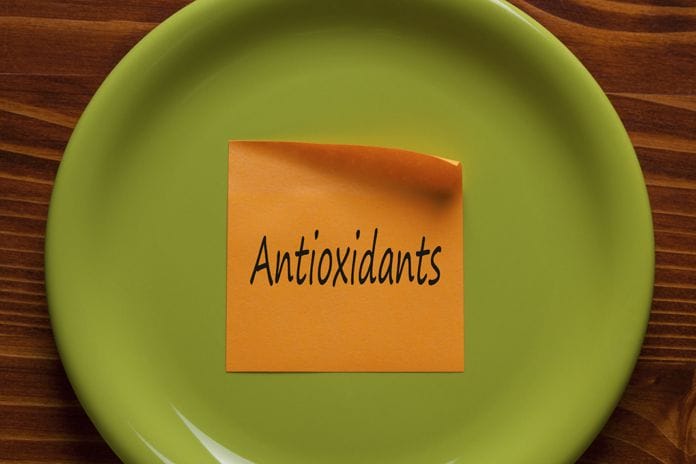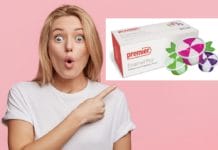Have you ever noticed that everywhere you shop, everything seems labeled with that word “antioxidant” or “now contains antioxidants?” I was at the makeup counter, and even the moisturizer said, “now with antioxidants.”
After a shopping trip one day, I wondered what I was missing. What is so important about antioxidants that manufacturers are taking up label space to announce this property? I started to do some research about antioxidants and discovered a rapidly growing trend in how many universities and medical institutions are studying antioxidants and oxidative stress.
Instead of the handful of studies as in the past, now thousands of studies are being conducted and published on pubmed.gov. In researching, I found over 250 disease processes are linked to oxidative stress (OS)1. This includes diseases we may have in our families and see in the patients we treat:
- Diabetes
- Autism
- ADHD
- Parkinson’s
- Alzheimer’s
- Osteoarthritis
- Lupus
- Multiple Sclerosis
- ALS (Lou Gehrig’s Disease)
- Cardiovascular Disease
- Colon Cancer
- Melanoma Skin Cancer
- Periodontal disease
- Aging
- Dementia
- 200 or more additional diseases (search “disease” + “oxidative stress” on pubmed.gov)
To understand Oxidative Stress (OS) is to understand free radicals. Free radicals are toxic by-products of oxygen metabolism2. Free radicals form when weak bonds between electrons are broken, which leaves an odd number of electrons. Left unpaired, that electron is chemically reactive. In order to stabilize, an atom needs to ‘steal’ one electron from a neighboring pair. A visual example of the outcome of OS is a cut apple turning brown, a cut avocado or potato turning brown, within minutes of the cut. This is why when we store our food in a Ziploc™ or use a Seal-A-Meal™, we are trying to extract all of the oxygen before refrigerating or freezing the food.
Environmental causes of OS or free radicals are breathing polluted air, smoking, alcohol, radiation exposure, excessive exercising, or eating fried foods. Accelerated exposure to these things can cause diseases as mentioned above. These chronic inflammatory processes generate Reactive Oxygen Species (ROS). The molecules most susceptible to ROS are those of unsaturated lipids, as they damage cell membranes. Damaged cells from oxidative stress are referred to as lipid peroxidation2. Further, the oxygen-derived free radical wreaks havoc on the protection provided by the antioxidant enzymes, particularly superoxide dismutases, catalases, and glutathione peroxidases1.
Ever wonder why dogs live such a short life? They pant, which means they are drawing in much more oxygen than we are and thus dogs age at about seven years to our one year. My retired racing greyhounds are a perfect example. Over the years, they have suffered from osteoarthritis, thyroid disorders, and hemangiosarcoma.
All of this electron-stealing results in an imbalance in the body which leads to antioxidant depletion. Our body has a natural mechanism that stimulates its powerhouse of antioxidant enzymes that are activated by the Nrf2 protein on our DNA strand. It functions quite well until we are in our early 20’s and then it ‘shuts off.’
The shutting off of this Nrf2 protein has led to an emerging new area of science, you may know as nutrigenomics. Pharmaceutical companies and companies that produce supplements or activators are fast investigating and developing ways to turn this protein back “on.” Reactivating the Nrf2 protein leads to the production of enzymes allowing our bodies to continue to make antioxidants. This is important because our body’s mechanism fights free radicals 1:1 million every second of every day. Whereas ‘taking’ an oral antioxidant, or eating blueberries, oranges, drinking red wine, or taking vitamin C, fights free radicals at a mere 1:1 ratio.
Dentists, periodontists, and dental hygienists should be aware of the correlation between low antioxidant levels and inflammatory oral soft tissue diseases. Studies have shown the correlation between low antioxidant levels and high oxidative stress with periodontal disease3, oral cancer4, recurring aphthous stomatitis5, dental caries6, as well as lichen planus7. Saliva testing can measure a patient’s antioxidant levels. Serum testing can be used to measure TBARs (thiobarbituric acid reactive substances) which are formed as a byproduct of lipid peroxidation which is an indicator of oxidative stress8.
Patients with this imbalance may have options to consider with their dental professional and should be addressed during their treatment planning phase. Meticulous scrutiny of the patient’s medical history, as well as having a dialogue with the patient about their lifestyle and nutrition, will render information that you can use to assess their risk for an imbalance of antioxidants and oxidative stress. Once that is established, testing and treatment planning can be completed, and the dental professional can utilize modalities for treatment.
Oxidative stress and free radicals are more than just buzz words. They pose implications to oral health and overall health. In future segments of this series, we will:
- Go in-depth into the systems of the body and the effects of OS
- Discuss the mechanism by which OS causes aging
- Discuss how the oral cavity is affected by OS
- Investigate how OS is a contributing factor in periodontal disease
- Review how the marketplace is responding to treatments of periodontal disease using antioxidant therapies and Nrf2 activation therapies
Now Listen to the Today’s RDH Dental Hygiene Podcast Below:
References
- Brooks M Hybrtson, Bifeng Gao, Swapan K. Bose, Joe McCord. Oxidative stress in health and disease: The therapeutic potential of Nrf2 activation. Molecular Aspects of Medicine 32 (2011) 234-246.
- Henning B. Chow CK. Lipid Peroxidation and endothelial cell injury: implications in atherosclerosis. Free Radical Biol Med. 1988;4:99-106.
- Chapple ILC, Matthews JB. The role of reactive oxygen and antioxidant species in periodontal tissue destruction. Periodontol 2000 2007,;43:160-232.
- BarutO, Vural P, Sirin S, et al. The oxidant/antioxidant status and cell death mode in oral squamous cell carcinoma. Acta Odontol Scand. 2012,;70:303-308.
- Momen-Beitollahi J, Mansourian A, Momen-Heravi F, et al. Assessment of salivary and serum antioxidant status in patients with recurrent aphthous stomatitis. Med Oral Patol Cir Bucal. 2010:15:e557-561.
- Southward K. The systemic theory of dental caries. Gen Dent. 2011;59:367-373.
- Agha-Hosseini F, Mirzaii-Dizgah I, Mikaili S, et al. Increased salivary lipid peroxidation in human subjects with oral lichen planus. Int J Dent Hyg. 2009;7:246-250.
- Janero (1990). Malondialdehyde and thiobarbituric acid-reactivity as diagnostic indices of lipid peroxidation and peroxidative tissue injury. Free Radic Biol Med. 9(6):515-40. doi:10.1016/0891-5849(90)90131-2. PMID 2079232.












